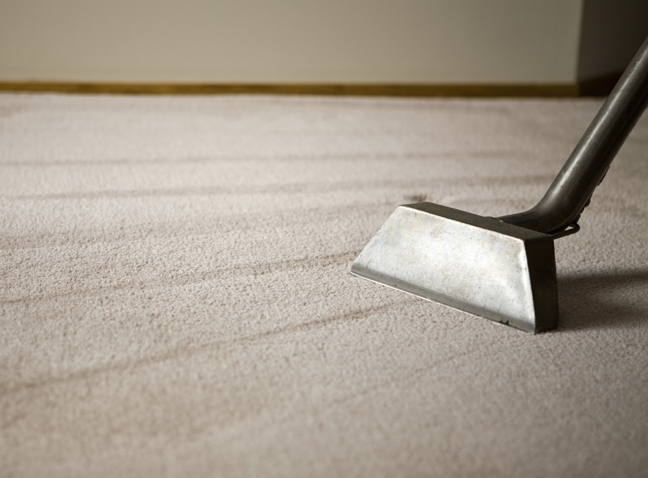It shouldn’t surprise you to hear that the physicality involved in professional cleaning can take a toll on workers. According to 2015 data from the U.S. Department of Labor’s Bureau of Labor Statistics, work-related injuries in the janitorial field are experienced at a rate of more than twice the national average. What’s more, in 2015 there were 42,740 days-away-from-work cases due to nonfatal occupational injuries and illnesses. The median days away from work to recuperate – a key measure of severity of injury or illness – was 10 days. Workers whose jobs involve reaching overhead, bending and lifting or repetitive pushing and pulling are often subject to musculoskeletal disorders in the body’s joints, ligaments, muscles, nerves and tendons. These disorders can include carpal tunnel syndrome, tendinitis, rotator cuff injuries, epicondylitis (of the elbow), muscle strains and lower back injuries, the Department of Labor reports. These conditions – caused by tasks such as vacuuming – are not only painful but they are negatively impact worker function. Vacuums are used by virtually every cleaning facility, so it’s important to have the right equipment and to train your staff on proper vacuuming ergonomic technique. Understanding and addressing the ergonomics of cleaning and vacuuming on all types of vacuums can prevent injury, reduce fatigue and increase efficiency.
Commercial vacuums generally weigh between 10 and 25 pounds. Pushing upright machines puts asymmetrical stress on the user’s arms and shoulders, which increase the risk for an ergonomic injury, while the repetitive back-and-forth motion can cause MSDS. How you hold and move your body while vacuuming can greatly impact productivity and work comfort and safety. The following tips should help:
– Mind your posture. Line up your body with the path of the vacuum. Do not twist the back. Minimize hunching over and use your legs as often as possible.
– Be mindful of over-extending your reach. Keep the wand close to the body. The further you move the wand from the body, the more likely your arms will fatigue.
– Alternate vacuuming between two hands. Switching between hands helps aid in the resting of frequently used muscles and body parts without losing productivity time.
– Pay attention to vacuum settings. Consider self-propelled vacuums or those with increased maneuverability to reduce tension while moving the vacuum back and forth. Also, make sure to adjust the vacuum properly for the floor type. Ensure the vacuum is set at the proper height and roller speed for the floor type.
According to ISSA’s 612 Cleaning Times, a faster way to cover more square feet with a vacuum is to use a backpack instead of an upright; if the backpack is cordless, the efficiency is even greater. In addition, backpacks – especially cordless backpacks – help reduce the risk of falls and liability. This is especially important considering that the National Floor Safety Institute (NFSI) states that slips and falls are the primary cause of days lost from work. Lost days result in lost time, which decrease overall productivity. Since their introduction in the 1980s, backpacks have made great strides in terms of ergonomics and efficiency.
Drawing inspiration from the designs of mountaineering backpacks, manufacturers of commercial cleaning equipment are introducing products that are not only comfortable to wear, but easier to use, as advancements in harnesses stabilize and balance machines. Some brands are even introducing gender-specific backpacks that are made to better fit a variety of body sizes and types.
Fitting the backpack is critical to comfort. Follow these steps to encourage proper posture and maximum productivity:
– Ensure the harness fits properly by loosening the straps, then fastening and tightening the waist belt. The weight of the vacuum should rest on the hips, allowing the legs to carry the weight of the unit, not the back.
– Adjust and tighten the shoulder straps so the unit sits close to the body, but not to the point of shifting the weight to the shoulders.
– Adjust the sternum strap for a snug fit as your last step before starting to vacuum.
Backpack vacuum users tend to employ a more neutral position compared to that of an upright. If fitted properly, it shouldn’t be much different from regular walking. The leg muscle and large muscles in one’s back don’t tend to get fatigued as easily as the arms. Additionally, unlike an upright vacuum, where the wand is pushed back and forth, the wand to the backpack should follow a technique called the “windshield wiper”. By twisting the torso and making a sweeping side-to-side motion, like a windshield wiper, you’ll be able to cover at wider cleaning path with the wand.
Canister vacuums with a lightweight wand are generally much easier to push and pull than an upright. A flexible hose is important to allow for easy maneuverability. Not having to bend down to constantly move a cord can also increase cleaning efficiency. The canister can be used for floor cleaning and stairs. Make sure the canister can easily trail behind you or another worker without heavy lifting. Bend your legs for leverage to help move the canister if it gets hung up. Ensure the wand fits well in the hand.
Vacuuming is part of most custodians’ daily tasks. Since the occupation has such a high rate of work-related injury due to repetitive motion, making adjustments to small daily tasks can have a large impact. Educate your staff on the best tech on the best techniques for vacuuming to help ensure they remain injury free.
Contact EcoCare today to setup a free quote and we will be happy to take care of all of your commercial cleaning needs.
Source: Cleaning & Maintenance Management magazine, written by Stephanie Mitchell

